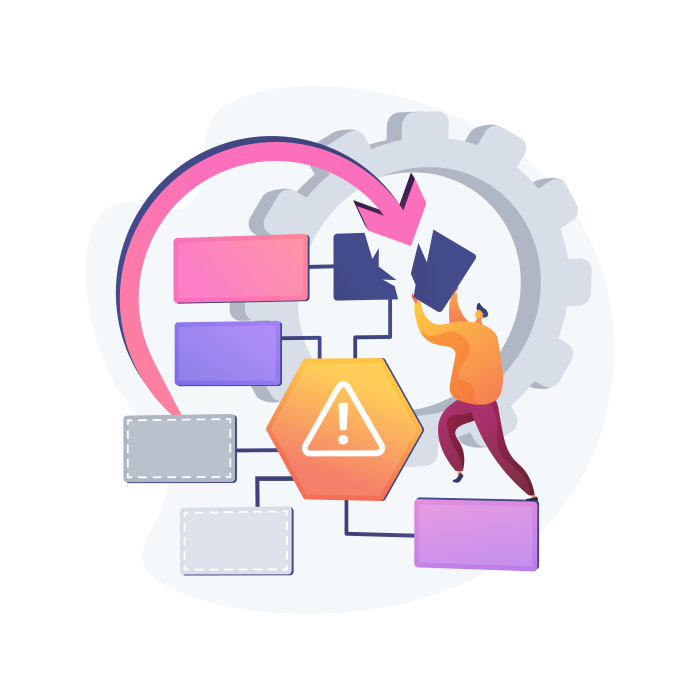
 Data Structure
Data Structure Networking
Networking RDBMS
RDBMS Operating System
Operating System Java
Java MS Excel
MS Excel iOS
iOS HTML
HTML CSS
CSS Android
Android Python
Python C Programming
C Programming C++
C++ C#
C# MongoDB
MongoDB MySQL
MySQL Javascript
Javascript PHP
PHP
- Selected Reading
- UPSC IAS Exams Notes
- Developer's Best Practices
- Questions and Answers
- Effective Resume Writing
- HR Interview Questions
- Computer Glossary
- Who is Who
What is Critical Chain Project Management
Critical Chain Project Management (CCPM) is related to the Critical Path Method and its aim is to plan the project and complete it within a time. However, CCPM goes further by accounting for the facilities necessary to complete the work.
The main issue is that, even as it performs in principle, it fails to account for the fact that production does not have infinite resources in practice. And so forth and - and your firm has real-world constraints (i.e. bottlenecks) that restrict what more work you can complete.
Constraints of Critical Chain Project Management

Each job has some uncertainty.
Team members or task owners frequently overestimate task durations. It is typically done to provide a safety buffer to the task, ensuring that it is completed within the time frame specified.
Most activities must be finished earlier rather than later, even if the outcome measure includes a safety buffer.
If you don't require the actual safety distance, it's a waste of time. Because the resources for following activities may not be accessible until the specified time, completing work early does not reform for acceleration and inclusion for the following tasks to begin sooner. In other words, the time saved cannot be used to finish the job on time. Whenever there are delays above the projected timetable, such delays will undoubtedly transfer over, and the work plan will most likely rise enormously.
Steps of CCPM
First step
The first step is to ensure that the personnel estimating the job time are on the same page as you. First, folks must comprehend what you are attempting to accomplish. No, you're not looking for the "safest" quotation. Instead, a clarification on how long it takes on average to accomplish the work under ideal conditions. They also seek consistent, low-risk projections.
Second step
Non-critical paths are generally allowed by most project managers to start early. They believe that by doing so, these courses will have enough time to complete on time. If you employ this method, the routes of the unimportant members will realize they have plenty of time.
In Critical Chain Project Management, each deadline is not stamped. You instead place it at the end of the sequence. It enables you to apply the aggregate rule, we briefly mentioned before. Even though the buffer is presented as an activity, no effort is planned to fill it.
Third step
To calculate the buffer, simply add up all the active periods. Your cache is half of that total. It is used by all operations. If any one of the operations is delayed, the operations that follow fail to start.
Subordinate channels provide an important chain that is a part of it. The project manager should protect the critical chain by allowing potential buffer time as each subordinate chain feeds its data.
Now is the time to put an end to resource overflow. The resource cache will only be used on the critical thread, not on the subordinate thread. Financial incentives can be used as a resource buffer when working on a high-risk project or when hiring contractors.
The Project Buffer
The project buffer is the period between the project's final work on the schedule and the site's date of completion. This "safe" timeframe buffer acts as a contingency plan for project assignments. Any disruption in the network path will deplete this cache, but the overall project deadline will remain unchanged. The gain will be added to the project cache if a project activity is finished earlier.
The Feed Buffer
A feed chain is any stream of activity connected to a critical chain. The power buffer protects the critical chain from breaking the source chain. The source buffer is essentially added to the non-critical sequences so that any delay in the non-critical sequences does not affect the critical sequence.
Feed Buffers, like Project Buffers, are added to the feed project's base schedule from the last action in the feed series (non-critical series) and the activity in the critical series. The feeder buffer is computed similarly to the project buffer.
The Resource Buffer
A resource can be either a person or a piece of equipment. Information vaults are frequently positioned across the critical chain to ensure that they are always available. While Project Cache is used to "save" time for projects in order to complete them on time.
Benefits of CCPM
It enables you to execute jobs more quickly
It enhances team leaders' attention
It improves planning dependability and allows you to make better use of your capabilities
It avoids float/slack handling
It enables you to get more consistency, efficiency, and speed out of your project planning
It suggests improvements for effective project management and provides superior design, price, and timely completion
It paves the door for a more pragmatic and realistic design phase
The critical chain technique improves on the important route method by taking project resources into account. As a result, it is more authentic and useful. Additionally, reserve technology provides more precise task length prediction and speedier delivery.

